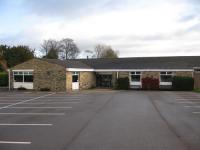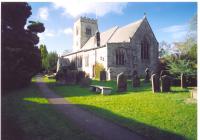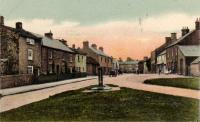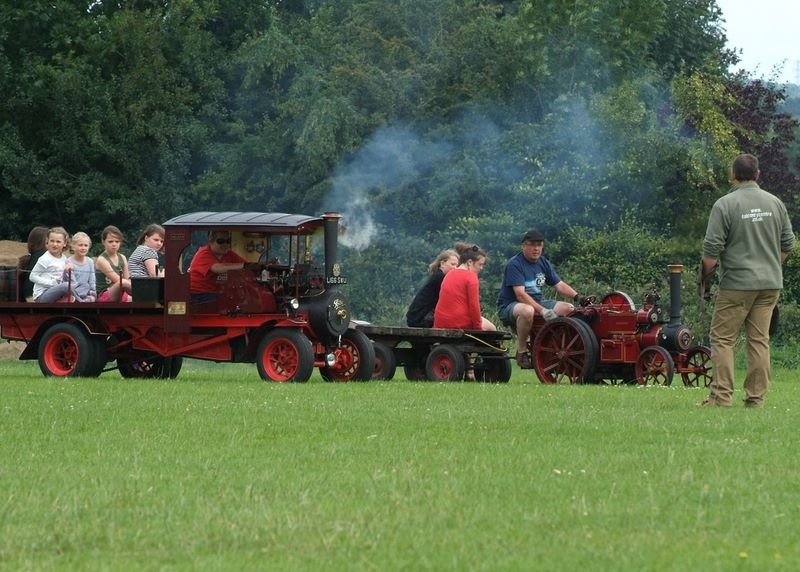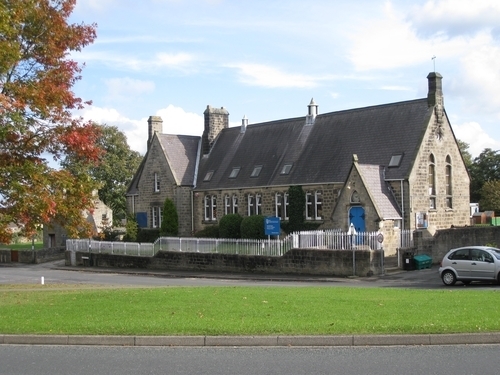Recent articles
© DT Online 2010 - 2026
| The Hampsthwaite Church Turret Clock - by Robert LloydIndexThe Hampsthwaite Church clock was 100 years old on the 12th April 2012. 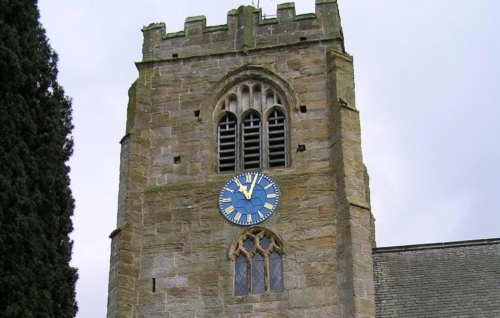 The commemorative plaque reads –
Church birth records show that John Swale was baptised on Sunday 31st December 1843 to parents Richard and Ann Swale. Richard and many in the family were Nidderdale weavers. Known as turret clocks, or sometimes tower clocks, these clocks are usually seen only by those who wind them. The following is a list of Hampsthwaite Church clock winders since 1912 as recorded on the clock case door.
“As winders we have welcomed many visitors over the years with over sixty visitors marking their names on the clock case door. A great tradition stretching back over the century.” Up the Tower
We enter a low door at the bottom of the tower and there in the cramped entrance an old stone spiral staircase winds its way upwards out of our sight. The steps are worn and uneven, narrow slit windows at every turn let in much-needed light, and it's rather cool and a bit dusty. An odd cobweb or two adds to the feeling that not many people pass this way. Above us we can now just make out the muffled sound of the clock ticking, a steady deep clunk every second, like the sound of a very old grandfather clock. 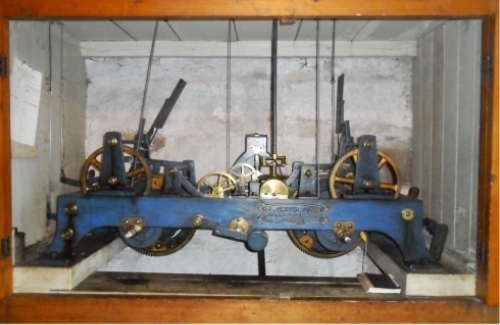 Moving up the spiral staircase, we come to the clock room door which has a simple bolt key. Lit by an old leaded south window, we see against a wall an old wood and glass case, locked by a small cabinet key. The tick is now much louder and emanates from inside. Opening the wooden clock case, we now see the clock itself: an iron frame filled with gear wheels. At the back is the top of the pendulum swinging from side to side. The clock was built by John Smith and Sons in 1912. John Smith began his own business in 1856 and it flourished in Derby during the 19th century industrial revolution, as one of the principle companies making flatbed turret clocks installed in churches, town halls and hospitals. Annual maintenance has been carried out since 16th June 1947 by William Potts & Sons Limited of Guildford Street, Leeds, who joined the Smiths of Derby Group in 1935. William Potts & Sons had since 1833 been primarily concerned with domestic timepieces. The company gradually expanded into the manufacture and repair of public clocks. The clock mechanism is properly known as a ‘movement’ and is based on a very old design. Right in the front of the movement is the brass clock dial used to check and set the time – it has only one hand. A rod runs from immediately above the brass dial up to the ceiling, turns through 90 degrees to a horizontal rod, which then links directly through a set of gears to the clock face on the outside of the tower. These gears, known as the ‘motion work’, are situated inside the tower and behind the clock face. They reduce the one-turn per hour of the minute hand into one turn in twelve hours of the hour hand. The motion work connects to the hands outside with a tube which runs through a hole in the tower wall which is very thick - about four feet! Clock faces such as these are made from copper sheet. In the clock case movement, there are three winding drums with a thin braded wire extending upwards over pulleys and across the ceiling to the opposite corner of the clock room. These wires then plunge down through a hole to three separate heavy cylindrical weights hanging from them. The largest, for the hour chime, is about three feet tall and a foot in diameter. Fortunately, some guards around the holes protect the unwary visitor from falling in. These weights provide the driving power for the clock pendulum and for the striking of the bells. The smallest centre weight provides driving power, through the middle winding drum in the clock case movement, for the pendulum; the weight on the right is connected to the left winding drum, which drives the two quarter hour bells. The left (heaviest) weight is connected to the right winding drum and operates the single hour bell. Three thin solid wires extend from the clock case to the ceiling, going directly up to the belfry where they operate the hammers to strike the three bells used by the clock: two quarter hour bells and one hour bell. The hour chime is triggered by little pillars placed into the large hour cog on the right hand side of the movement and the quarter hour chimes are triggered by little pillars placed into the large quarter hour cog on the left side of the movement. Our flatbed turret clock keeps very good time. It runs a few seconds fast over most of the year and a few seconds slow when the outside temperature is above 20 degrees Celsius. To adjust the clock (speed up or slow down) small weights are added or subtracted from the top of the pendulum. These effectively change the centre of gravity of the pendulum and change the period of swing. The weight adjustment on the pendulum and the weekly check following winding, keeps the clock in very good time.In the Belfry Proceeding further up the stone tower staircase, we open another door and hear the outside wind; a reminder that we are now getting near the top of the tower. In the belfry, louvres are used instead of windows, which are open slats allowing the sound to escape whilst keeping the rain out. There are six bells in the belfry: all brass, dull and green. Only three are used for the clock. Belfries can be very dangerous and noisy places if a bell suddenly starts to sound when the clock is striking. The note of the bell is very loud, deep and harsh: if you go up to the belfry, take extra care and be sure to cover up your ears. After the last stroke has sounded the bell goes on humming and humming, softer and softer until after a minute it has died away completely.The Hampsthwaite Church Turret Clock - by Robert Lloyd IndexThe Hampsthwaite Church clock was 100 years old on the 12th April 2012.  |




